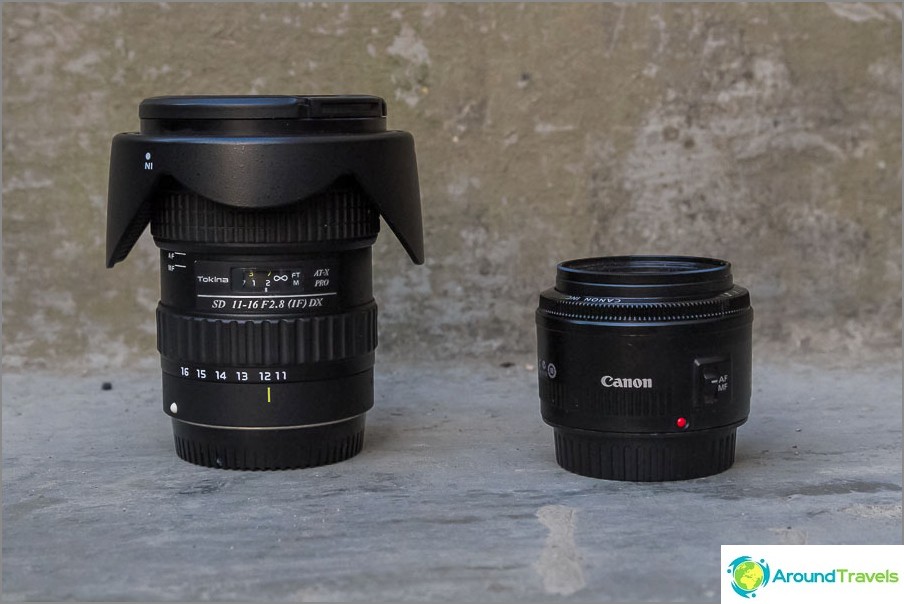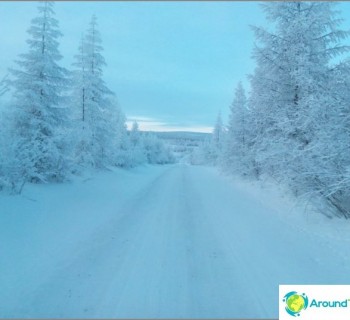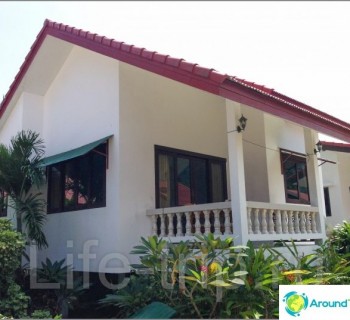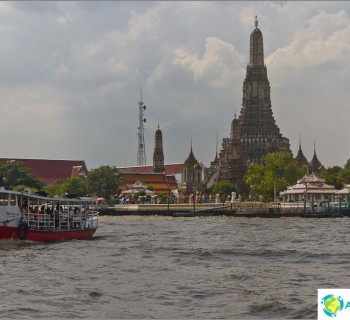With lenses, everything is somewhat simpler than with cameras, there are much fewer parameters and everything is much simpler. There is a focal length, measured in millimeters, aperture ratio, and the presence / absence of a stabilizer. I'll tell you more about everything.
The content of the article
- one All parts of my Beginner Photographers FAQ
- 2 Focal length
- 3 Crop factor
- 4 Aperture ratio
- five Some nuances
- 6 What lens is needed for what
All parts of my Beginner Photographers FAQ
one. Which camera to choose for a novice photographer
2. What lens is needed for what and what to choose
3. Basic Digital Camera Settings
4. How to take travel photography
five. How to process photos in Lightroom and how to store them
6. Example of a photo bag and travel backpack
7. How to photograph the starry sky
0. What I photograph when traveling
Focal length
In fact, you don't really need to know what it means physically. It is easier to remember that the more millimeters, the closer the object will be to you, or it is often said that the angle will be narrower. This is indeed the case, zooming in on an object, you seem to crop the frame around the edges and it does not fit into it that could fit into the field of view of a wide-angle lens. With a bit of your first lens, you will immediately know what focal length you need to use. Therefore, at first, do not buy many lenses, one is enough to take aim, for example, the cheap kit Canon EF-S 18-55mm f / 3.5-5.6 IS II, which comes with many budget Canon cameras..
There are fixed lenses (they are called fixes), and there are zooms. For the first, the focal length does not change in any way, for the second, it can be changed manually by turning the ring on the lens. If you are just starting out, then most likely you do not need fixes, because they are bought for maximum quality and good aperture, and the price will be appropriate. Moreover, when you take pictures, it is much more convenient to be able to quickly zoom in or out of the object, otherwise you will need to change one lens for another, which is much longer, and if this happens often, it really gets boring.

What lens is needed for what
Crop factor
Further, I simply have to tell you that there is still such a thing as the crop factor, which in some way tells us about the size of the matrix of our camera in comparison with others. The matrix of a full-frame camera is taken as a unit (the cheapest full-frame ones are Canon 6d and Nikon d600), and the rest of the cameras have crop factors, which mean how many times the matrix diagonal is smaller than that of a full frame. For example, 1.6 (Canon 650d, Canon 60d, Canon 7d), 1.5 (Nikon d300, d7000), 2.5 and more for different soap dishes. These figures (1.6, 1.5, 2.5, etc.) are the crop factor. I think it is clear that the larger the matrix, the better the quality of the resulting image, and if the price of a carcass did not increase sharply from this, then everyone would only go with full-frame cameras and it would be possible not to write about the crop factor.
Okay, figs with it with a diagonal, it is more important that the crop factor conditionally increases the focal length, that is, the larger the crop factor, the more the object will be brought closer. For example, for Canon 5d mark (crop factor 1) the standard lens will be 24-70 mm, and for Canon 60d (crop factor 1.6) - 17-55 mm. That is, looking into the viewfinder of both cameras with the aforementioned lenses, the objects will be visually at the same distances, although the millimeters are different. The crop factor is also sometimes called the focal length multiplier. For cropped carcasses, you need to recalculate the focal length to get real numbers. That is, we take a 17-55 lens mounted on a cropped camera and multiply it by a crop factor of 1.6 (for all amateur DSLRs) and we get 27-88 mm (17 * 1.6 = 27 and 55 * 1.6 = 88), that is, almost the same same as 24-70 lens for full frame. That is why we see equally close objects on these two cameras with these lenses. Remember that millimeters on all lenses are always for a full frame, no matter which camera the lens is intended for..

Most popular crop factors
If the above seemed difficult to you, then do not be discouraged, by and large it is not so important. You put this or that lens on your cropped camera and get used to those millimeters that will be indicated on the lens body and you will operate with these numbers without any recalculation. And only if you suddenly then switch to full frame, then only then you will have to get used to again to «new» millimeters.
Aperture ratio
It is designated as 1: 4 or 1: 1.2 and is indicated on the edge around the front lens. In fact, the aperture ratio is how much light is attenuated when passing through the lens, the value of the aperture ratio depends only on the lens itself and nothing else. But in the common people the aperture ratio is called the maximum open aperture that we can expose on the camera with this lens. That is, if we do not go into theory and talk about practical application, then the number after one is just important for us (in this example, f4 and f1.2). The lower the number, the faster the lens. Usually lenses with a value of somewhere between 1.2-2.8 are considered as such, and they are very convenient for shooting in the dark or for photographing the starry sky. But not only this is their plus, but also in the small depth of field (depth of field). Surely, you have seen photographs where there is a clear person in the foreground, and the background is beautifully blurred, and such things are done due to open apertures and, accordingly, high-aperture lenses. Of course, you can do this with a regular aperture (for example, f5.6), but I'll write about this in the next article..
Some nuances
- If you buy a lens for Canon, then it will not fit the mount (connector) for Nikon, and vice versa. There are also other companies that make lenses (as a rule, they are cheaper) for all cameras and mounts - Tokina, Sigma, Tamron. I would also like to mention the inexpensive high-aperture fixtures Samyang, they are very much praised, but they do not have autofocus, which is not suitable for everyone..
- There are adapter rings to mount lenses other than your mount, but I've never used them..
- Each lens has a glass diameter (also measured in millimeters), you will need to know it if you buy a filter. Of the really necessary ones, this is the CIR-PL polarizing filter. You can also buy ultraviolet UV, which is essentially a regular transparent glass and is only needed to protect expensive optics from scratches and bumps. But there are different opinions on this matter, and someone says that there is no sense in him..
- The larger the zoom (focal length range), the poorer the image quality. This is usually really noticeable at large zooms, such as 18-135 mm or 18-200 mm, and manifests itself in the form of distortion, poor sharpness, aberration, etc. You need to look at the pictures of a particular lens for these distortions and decide whether they are satisfied or not..
- A wide-angle lens (shirik) is somewhere around 10-15 mm for a crop, and 15-20 for a full frame. There is also a lens called a fish eye. Despite the super wide angle, it is not analogous to the width, because they break the picture in a peculiar way, protrude it.
- A portrait lens is usually referred to as 85mm for a full frame and 50mm for a crop..
- Before buying a lens, always read reviews about it and see pictures already taken by other people, all this is on the Internet.
- Once again, the Canon EF-S 18-55 kit lens is a good thing and it will definitely be enough for you for the first time, if you don't know anything yet. When you buy a camera right away with this lens, you literally overpay 1-2 thousand rubles, that is, you get it almost for nothing (if you take it separately, it is more expensive). True, there are other kits with a different lens..
What lens is needed for what
- To shoot landscapes, architecture, you need a zoom, with focal lengths starting from 17-18 mm (for crop) and from 24-25 mm (for a full frame).
- For shooting in a narrow space or a starry sky, a wide-angle lens, 10-15 mm (crop) and 15-20 (full frame) is useful.
- For reportage shooting, it is convenient to be able to bring a person closer, which means that you need a zoom with a far end of about 100-150 mm. There are more (70-200 or 70-300), but then the near end will be too narrow and not suitable for anything other than reporting from afar.
- Lenses such as 70-200 and 70-300 are usually used in landscape photography to get closer to a piece of nature or to photograph animals and birds. Also for macro you can use.
- For shooting flowers and flies, there are special macro lenses. But, if a strong approximation is not needed, then zooms are quite suitable, as I already wrote above.
- For portraits, it is best to buy a 50mm (crop) or 85 (full frame) fix, then you will have beautiful bokeh and the background is perfectly blurred, and the aperture is good. But this is all if you really want to shoot portraits, often with a claim to professionalism. Otherwise, normal zoom will do. By the way, fixes come in different apertures, and at first do not chase the most expensive ones. For example, Canon 50 f1.8 is enough for you, instead of Canon 50 f1.4 (twice as expensive). And I generally keep quiet about the Canon 50 f1.2, it is clearly not for beginners.
- If you are not picky about image quality, then for travel photography it would be best for you to take a large zoom (18-135 or 18-200), then you will cover all the focal lengths and you will not have to constantly change lenses. A kind of versatile lens. In addition, a photo bag with you will be very small from such a set, which is important in those travels where weight is important..
If you somehow summarize the choice of lens for travel, then in most cases you will need a line of lenses, or one universal one with focal lengths somewhere from 17 to 100 mm, they are most often used, we are talking about crop. Naturally, this is in my opinion. When traveling (and at home too), a ruler of two lenses and a total focal length of 11-105 (Tokina width 11-16 f / 2.8 + standard Canon EF 24-105 f / 4 zoom) are more than enough for me. Moreover, if I did not like photographs taken with a width, then it would be possible to do without a width, after all, 11 mm is rarely needed in everyday life. True, then 24 mm would be too narrow in confined spaces. That is why I wrote that it is best to have a ruler starting from ~ 17-18 mm (for a crop).


